Deborah J. Ross's Blog, page 91
January 1, 2018
Lace and Blade 4 Author Interviews: Pat MacEwen
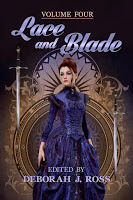 Just in time for Valentine's Day, Lace and Blade 4 offers a bouquet of sensual, romantic, action-filled stories. Order it from online booksellers in ebook and paperback editions. The Table of Contents is here.
Just in time for Valentine's Day, Lace and Blade 4 offers a bouquet of sensual, romantic, action-filled stories. Order it from online booksellers in ebook and paperback editions. The Table of Contents is here.Deborah J. Ross: Tell us a little about yourself. How did you come to be a writer?Pat MacEwen: Born that way, apparently. I started doing crayon drawings and telling stories about them when I was four, and put my toy giraffe through endless adventures that cost him one of his four rubber hooves and all of his dignity, but he never seemed to mind very much. I read everything in sight, including cereal boxes, and spent a lot of time playing pinochle with my older relatives. They gossiped like mad and told stories non-stop, and I learned all about how they survived the Great Depression, World War II, the government’s Indian boarding schools, and sometimes each other. At 13, I was given a box full of paperbacks by an older cousin during a cross-country road trip, and promptly fell in love with the works of Andre Norton, Poul Anderson, Terry Carr, Doc Smith, and dozens more. Eventually, I wondered whether I could ever do anything half as good, and decided to try. Probably doesn’t hurt that the MacEwen clan has been spawning bards and shanachies for a thousand years and more.
DJR: What inspired your story in Lace and Blade 4?PM: My son-in-law runs EuCon – an annual Comic-Con that takes place in Eugene, Oregon every fall. I met one of their celebrity guests last year – Deep Roy – a diminutive actor who has played Yoda and all of the Oompa Loompas, and has had many other roles in science fiction and fantasy films. The man has a delightful sense of humor and such a deep and abiding intelligence, he intrigued the hell out of me. It so happened I’d already run across a biography of Lord Minimus, and I found myself imagining Deep Roy in the role of that valiant though very short cavalier. And then I got to wondering what would happen if the smallest man in British history were to encounter the Little People during the height of the English Civil War. Now I’m working on a screenplay about his further adventures in France, with the Court-in-Exile.
DJR: What authors have most influenced your writing? What about them do you find inspiring?PM: Poul Anderson is one of my personal heroes. He built so many amazing aliens and alien cultures, and he did it with so much humanism, you couldn’t help but sympathize with them, including the villains! All while using the most amazing bits of new scientific information. Thomas Costain wrote excellent historical fiction and non-fiction (especially his series about the Plantagenets) that did much the same for the Middle Ages C.J. Cherryh has taken me deeper into plausible but totally alien minds and cultures than I ever thought was possible. Pat Conroy and Connie Willis are two very different authors who have succeeded in reducing me to tears with both the screwball comedy and the sheer heartbreaking pathos in their stories, and they’ve each of them done it within the course of a single book. So that’s who I’d like to be when I grow up – one of those writers.
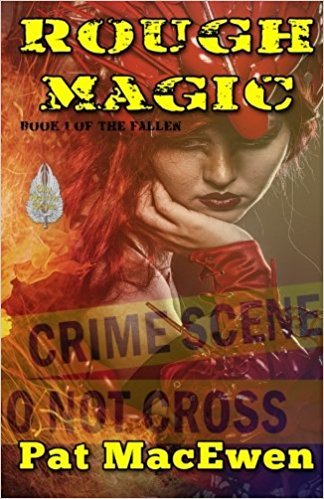 DJR: Why do you write what you do, and how does your work differ from others in your genre?PM: I’ve had a checkered career that includes degrees in marine biology and anthropology. I’ve also got a sordid past in forensics and war crimes investigations. So I’m a science and history geek with an abiding interest in how things and people and other creatures work, in how they can all go massively wrong, and how we survive it when they do. I like to use arcane bits of biology, and real events and people, and sometimes my old cases, and then ask questions that never come up in mainstream lit. What if the latest group of refugees in your home town are elves? How do you solve crimes involving magic? How do you, as a woman with strong maternal instincts, deal with an alien race that has no concept of mothers but their children are in peril? What is the right thing to do if your own freedom requires enslaving another species?I also publish papers in anthropology, where my research is centered on genocide. Surprisingly, it has no generally agreed-upon definition. Where, for example, do you draw the lines between homicide, mass murder, pogroms, and out-and-out genocide? You can’t even use a body count. If one is A murder, ten is a mass murder. Fine, but how many, then, is a genocide? What sets them off? Who are the victims, and who does the killing, and who gives the orders? Why does this country erupt in a bloodbath when that one doesn’t, and yet they seem to be suffering from the same problems and hitting the very same crisis points? For my part, at least, the most telling trait is whether or not the perpetrators are mounting attacks on children, on the future of the targeted group, but economics, history, mythology, nationalism, religion, demographics, and ethnic identity play major roles in the process.All that tends to feed into my fiction, along with my penchant for throwing weird sex into the mix – I am, at heart, a biologist and the need to reproduce shapes every species, does it not?
DJR: Why do you write what you do, and how does your work differ from others in your genre?PM: I’ve had a checkered career that includes degrees in marine biology and anthropology. I’ve also got a sordid past in forensics and war crimes investigations. So I’m a science and history geek with an abiding interest in how things and people and other creatures work, in how they can all go massively wrong, and how we survive it when they do. I like to use arcane bits of biology, and real events and people, and sometimes my old cases, and then ask questions that never come up in mainstream lit. What if the latest group of refugees in your home town are elves? How do you solve crimes involving magic? How do you, as a woman with strong maternal instincts, deal with an alien race that has no concept of mothers but their children are in peril? What is the right thing to do if your own freedom requires enslaving another species?I also publish papers in anthropology, where my research is centered on genocide. Surprisingly, it has no generally agreed-upon definition. Where, for example, do you draw the lines between homicide, mass murder, pogroms, and out-and-out genocide? You can’t even use a body count. If one is A murder, ten is a mass murder. Fine, but how many, then, is a genocide? What sets them off? Who are the victims, and who does the killing, and who gives the orders? Why does this country erupt in a bloodbath when that one doesn’t, and yet they seem to be suffering from the same problems and hitting the very same crisis points? For my part, at least, the most telling trait is whether or not the perpetrators are mounting attacks on children, on the future of the targeted group, but economics, history, mythology, nationalism, religion, demographics, and ethnic identity play major roles in the process.All that tends to feed into my fiction, along with my penchant for throwing weird sex into the mix – I am, at heart, a biologist and the need to reproduce shapes every species, does it not?DJR: How does your writing process work?PM: I usually start with opening and closing scenes. The opener has to hook the reader and pose the problem. The closer has to wrap it up, usually with heartbreak and (in)justice for all. Then I start working on how you get from here to there, usually by taking long walks and letting my mind wander while I get into a zen-style breathing pattern. On the way home, I stop off at the local coffee shop. I tip the baristas pretty well, and they’re amused by my mad ideas, so they let me sit there, sucking up caffeine and scribbling madly until they lock up for the night. Sometimes while they’re cleaning up, even after that. My goal is to do what Stephen King does so well with his opening paragraphs, which always put his viewpoint character’s heart in your hands right from the start. Other scenes will come to me as I work out their mechanics and their emotional bearings. Then I try to fit them together. I have problems, most of the time, with getting the middle done, and done right. Rare is the story that is simply written from start to finish.
DJR: What have you written recently? What lies ahead?PM: I have a new short story, “The Forever Boy,” coming out in Alma Alexander’s anthology of tales about refugees, Children of Another Sky. It’s based on a Cherokee myth about a boy who is taken in by their Little People, so he won’t ever have to grow up and face the world, or his own past. Some of my ancestors walked the Trail of Tears, and I wanted to see what that boy would do when and if that particular horror started all over again. I’m finishing True-Born, the sequel to my forensic/urban fantasy novel, Rough Magic, about those elvish refugees. I have a mini-murder mystery in an upcoming anthology of Darkover tales, and I’m polishing a rather odd alien sex/horror story called “Romancing the Goat-Sucker.” Not sure where that will end up!
DJR: What advice would you give an aspiring writer?PM: If you want to be a writer, then write. Write all the time. Write every day Write all sorts of things, and get that million words out. Keep on going until your craft hits a point where it all starts to crystallize. You won’t be anywhere near done learning your craft, but you’ll have enough control of it to start doing good stuff. Really good. On purpose. And read. Read everything. Fiction. Non-fiction. Poetry. History. Romances. Space opera. Screenplays. How-To books. Even cat food labels. Study up on what your favorite authors do, and how they do it. Volunteer for a small press mag of some sort and read the slush pile – that will teach you how not to do it! Above all, take the advice I got from my all-time favorite fortune cookie: Don’t stop now!
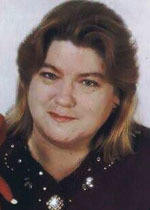 Pat MacEwen is a physical anthropologist. She works on human bones from archaeological sites in California and does independent research on genocide. She has worked on war crimes investigations for the International Criminal Tribunal, after doing CSI work for several years at the Stockton Police Department, and has also been a marine biologist at the Institute of Marine & Coastal Studies at USC. Rough Magic, the first novel in her forensic/urban fantasy trilogy, The Fallen, is out from Sky Warrior Publishing. She writes mystery, horror, science fiction and fantasy, and has published short stories in several magazines and anthologies. She is also working on an anthropology textbook, The Anatomy of Genocide. Her hobbies include exploring cathedrals, construction of interesting aliens on the basis of nonhuman sexual practices & biology, bedeviling her nephews and grandkids, and trawling through history books for the juicy bits.
Pat MacEwen is a physical anthropologist. She works on human bones from archaeological sites in California and does independent research on genocide. She has worked on war crimes investigations for the International Criminal Tribunal, after doing CSI work for several years at the Stockton Police Department, and has also been a marine biologist at the Institute of Marine & Coastal Studies at USC. Rough Magic, the first novel in her forensic/urban fantasy trilogy, The Fallen, is out from Sky Warrior Publishing. She writes mystery, horror, science fiction and fantasy, and has published short stories in several magazines and anthologies. She is also working on an anthropology textbook, The Anatomy of Genocide. Her hobbies include exploring cathedrals, construction of interesting aliens on the basis of nonhuman sexual practices & biology, bedeviling her nephews and grandkids, and trawling through history books for the juicy bits.
Published on January 01, 2018 01:00
December 29, 2017
In Troubled Times: How Stories Save Us
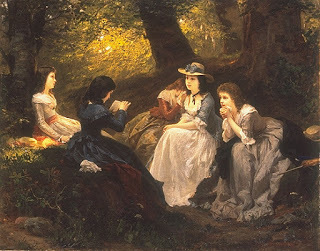 Stories can heal and transform us. They can also become beacons of hope.
Stories can heal and transform us. They can also become beacons of hope.Quite a few years ago, when I was going through a difficult personal time, I came across a book about the inherent healing power of telling our stories. No matter how scattered or flawed our lives may appear, as we tell our stories, we gain something. Patterns emerge from seeming chaos, and our lives begin to make sense. It may be dreadful, agonizing sense, but even tragedies have order and consequence. I found that over time, the way I told my story changed, reflecting my recovery process and new insight.
The mirror side of story-telling is story-listening. While a confidential diary or journal can be highly useful, having someone hear our words can be transformative, especially if all that person does is listening. Not judging, not analyzing, not wondering how to respond, just taking in our words, a silent partner on our journey. Often we feel less alone in retrospect, no matter how isolated and desperate we might have been at the time. Additionally, a compassionate listener invites us to be kinder with ourselves.
Perhaps this is how Twelve Step programs work, apart from any Higher Power mysticism or Steps: that by simply hearing our own voices relate our histories, and having the experience of being heard, we open the door to viewing ourselves through the lens of new possibilities.
Personal storytelling calls for discretion, of course. Although it may be true that “we are only as sick as our secrets,” casually (or not-so-casually) violating a confidence from someone else is not the same as choosing to include the listener in our own private lives. Some of us never learned healthy boundaries about what is safe to share, and when, and with whom. We, or others, can be harmed by indiscriminate broadcasting of embarrassing, illegal, or otherwise sensitive information. The kind of storytelling I’m talking about, on the other hand, is as much about the journey as it is the facts.
Stories can get us through dark times by giving us hope and inspiring empathy. Stories work by creating a bond between the narrator or central character and the listener/reader. Who wants to read a story about a person you care nothing about? And if that appealing character has a different history or journey, or learns something the reader never experienced, so much the better. We accompany them into darkness and out again.
Hopeful stories provide an antidote to fear-driven stories. We find allies in unexpected places. Who would have thought that scruffy old Strider would turn out to be Aragorn (not me, not the first time I read The Lord of the Rings)? They remind us that even in times when all seems bleak, the tide can and does turn. Spring follows winter’s desolation. We, too, can be saved. Or, more to the point, we too are capable of setting aside those fears and reaching out to those in need.
I have a treasure trove of stories I come back to again and again. They re-kindle hope in me but also when I tell them, they create a bridge of empathy, even with people who appear to be “on the other side” of arguments. One story I heard in an inter-faith workshop, from a Catholic woman who had worked with The Compassionate Listening Project in the Middle East. She said that she and her colleagues listened to people from different sides of the conflict there, and that as the speakers made their points and felt their experiences valued, their stances softened. Each side became more willing to look at mutually beneficial solutions and to acknowledge the suffering and aspirations of the other.
So stories of hope and positive change affect not only the storytellers but the listeners. A recent blog post on the website of the American Friends Service Committee (AFSC) put it this way:
Fortunately, research also shows that messages framed in terms of hope, especially when coupled with messages that include positive feedback, can counter fearmongering effectively. Hope-based messages can also help people change their minds about key issues. Why? Because when people have made up their minds about an issue, they are prone to only hear facts that support their position - especially if they are already stressed and the facts they hear are framed in terms of fear. But, when people hear messages framed in terms of hope and positive feedback, they are able to digest new information in ways that can ultimately lead to a shift in perspective.
As we move through troubled times, let’s do our best to create and tell – and re-tell as many times as necessary – those stories.

Published on December 29, 2017 01:00
December 27, 2017
Today's Moment of Serenity
Published on December 27, 2017 01:00
December 26, 2017
Today's Wisdom from Middle Earth
"The world is indeed full of peril, and in it there are many dark places; but still there is much that is fair, and though in all lands love is now mingled with grief, it grows perhaps the greater"
― J.R.R. Tolkien, The Fellowship of the Ring
― J.R.R. Tolkien, The Fellowship of the Ring

Published on December 26, 2017 01:00
December 25, 2017
Lace and Blade 4 Author Interviews: Dave Smeds
 Just in time for Valentine's Day, Lace and Blade 4 offers a bouquet of sensual, romantic, action-filled stories. Order it from online booksellers in ebook and paperback editions. The Table of Contents is here.
Just in time for Valentine's Day, Lace and Blade 4 offers a bouquet of sensual, romantic, action-filled stories. Order it from online booksellers in ebook and paperback editions. The Table of Contents is here.Deborah J. Ross: Tell us a little about yourself. How did you come to be a writer?
Dave Smeds: I loved fiction from an early age. I was particularly drawn to stories of imaginary worlds, or at least by settings that were in effect imaginary, such as Mars as depicted by Edgar Rice Burroughs. At age fifteen, it occurred to me I might be able to write a short story or two. I did that. The result was crap, of course, but every time I did another story or fragment of a novel, I could see how to improve. (It was, as you might imagine, REALLY OBVIOUS how I could improve.) I felt driven to eventually write something at a level I’d want to read if someone else had written it.
DJR: What inspired your story in Lace and Blade 4?DS: There is a great deal of me in “The Wind’s Kiss.” The fulfillment I feel in being a father. The contemplation of the pioneer life led by my ancestors as they moved westward, often literally dwelling right at the edge of civilization, first settlers on the scene. The vital need in our hearts for passion between, and admiration of, one’s lover. However, there is also a more specific inspiration for this particular piece. In August, 2016, I was finally able to take a journey through Nebraska. For the first time in my life, and quite possibly for the last time, I visited the grave of my great great grandmother, Marancy Alexander Warner. The land there has a windswept, deeply conscious aspect. I wanted to install that presence in my fiction as soon as possible, and as it happened, that sort of setting and mood was perfect for what I wanted to write for Lace and Blade 4.
DJR: What authors have most influenced your writing? What about them do you find inspiring?DS: In the early days, I never thought of myself as deeply influenced by any particular author, except perhaps in the sense that I loved to write sword-and-sorcery, and back then, anyone doing that was standing on the shoulders of Robert E. Howard and J.R.R. Tolkien. In retrospect, I see L. Frank Baum’s influence upon the way I structure a story. Baum did not write The Hero’s Journey. He wrote The Heroine’s Journey. That is to say, he wrote books in which the protagonist — usually a girl — makes alliances, as opposed to the Campbell paradigm where a young man pulls himself up by the bootstraps, stands alone, and takes sole credit for defeating an antagonist. I prefer the complexity and subtlety of The Heroine’s Journey.
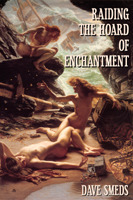 DJR: Why do you write what you do, and how does your work differ from others in your genre?DS: At first I wrote to prove I could do it. Next I wrote to earn money. Both motivations, in my view, demanded that I write the best work I could, so in that respect, I have no regrets. But I write now with the awareness that an author of fiction has an obligation to inject meaning into an essentially meaningless universe. That’s our job as human beings. We are creatures of pattern recognition. It’s our chief survival trait. But a fiction writer must do it better than anyone. Hard to do. However, at this point in my life I’ve proven I can write many types of fiction and I’m at a point where I don’t need the money, really, so what keeps me putting the words down on the chance it will move a reader in a way that would not have happened otherwise. As said, hard to do. I try anyway.
DJR: Why do you write what you do, and how does your work differ from others in your genre?DS: At first I wrote to prove I could do it. Next I wrote to earn money. Both motivations, in my view, demanded that I write the best work I could, so in that respect, I have no regrets. But I write now with the awareness that an author of fiction has an obligation to inject meaning into an essentially meaningless universe. That’s our job as human beings. We are creatures of pattern recognition. It’s our chief survival trait. But a fiction writer must do it better than anyone. Hard to do. However, at this point in my life I’ve proven I can write many types of fiction and I’m at a point where I don’t need the money, really, so what keeps me putting the words down on the chance it will move a reader in a way that would not have happened otherwise. As said, hard to do. I try anyway.DJR: How does your writing process work?DS: My process would drive any other writer nuts, I suspect. The ideas — whether it is for a scene, a character, a setting, a plot, a premise — bubble up and I go with what fascinates me at the moment. I see the whole story as a piece and fill in the pieces almost randomly as if assembling a jigsaw puzzle. I might write the ending first. I might write a little bit that fits two-thirds of the way along. Often I will start at the beginning, but it’s just about unheard of that I proceed from page one to the end in chronological order. I think that’s happened only three or four times in forty-seven years of writing, and only with very short pieces.
DJR: What have you written recently? What lies ahead?
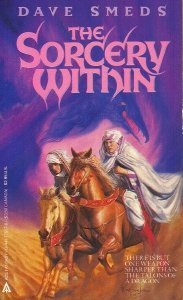 DS: In terms of output, I’ve slowed down tremendously in the past fifteen years. Lately quite a bit of my creative work has been on the art side of my career, doing covers of other authors’ books. For example, I did the cover for Lace and Blade 4. Since 2006, aside from reprints and adaptations, my fiction has appeared in either the Lace and Blade series or the Sword and Sorceress series. Of those, I’ve been absent from only two volumes, namely Lace and Blade 2 and Sword and Sorceress 30, and I did the cover for the latter. I plan to get back to doing spec short fiction for a variety of markets now that I’m at last on the verge of completing The Wizard’s Nemesis, the final volume of my War of the Dragons trilogy.
DS: In terms of output, I’ve slowed down tremendously in the past fifteen years. Lately quite a bit of my creative work has been on the art side of my career, doing covers of other authors’ books. For example, I did the cover for Lace and Blade 4. Since 2006, aside from reprints and adaptations, my fiction has appeared in either the Lace and Blade series or the Sword and Sorceress series. Of those, I’ve been absent from only two volumes, namely Lace and Blade 2 and Sword and Sorceress 30, and I did the cover for the latter. I plan to get back to doing spec short fiction for a variety of markets now that I’m at last on the verge of completing The Wizard’s Nemesis, the final volume of my War of the Dragons trilogy.DJR: What advice would you give an aspiring writer?DS: Forget about it. Quit right now. I don’t want any more competition.
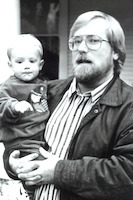 Dave Smeds has authored novels, short fiction, comic book scripts, and screenplays in a variety of genres including science fiction, contemporary fantasy, superhero, martial arts, horror, and erotica, but he is particularly at home when writing imaginary-world fantasy, as in his books The Sorcery Within and The Schemes of Dragons and his stories in over a dozen volumes of Sword and Sorceress. "The Wind's Kiss" is another such work, set entirely in a world of its own; however, the premise and the themes and the images are very much drawn from a personal wellspring, including his experience of being a father. The setting is directly inspired by a 2016 visit he made to the site of the pioneer homestead on the Nebraska prairie where his great great grandmother, Marancy Warner, finished her life. As he stood at her grave -- unmarked, but Dave knew where it was -- a breeze stirred.
Dave Smeds has authored novels, short fiction, comic book scripts, and screenplays in a variety of genres including science fiction, contemporary fantasy, superhero, martial arts, horror, and erotica, but he is particularly at home when writing imaginary-world fantasy, as in his books The Sorcery Within and The Schemes of Dragons and his stories in over a dozen volumes of Sword and Sorceress. "The Wind's Kiss" is another such work, set entirely in a world of its own; however, the premise and the themes and the images are very much drawn from a personal wellspring, including his experience of being a father. The setting is directly inspired by a 2016 visit he made to the site of the pioneer homestead on the Nebraska prairie where his great great grandmother, Marancy Warner, finished her life. As he stood at her grave -- unmarked, but Dave knew where it was -- a breeze stirred.
Published on December 25, 2017 01:00
December 20, 2017
Today's Moment of Serenity
Published on December 20, 2017 01:00
December 19, 2017
Today's Wisdom from Middle Earth
“I wish it need not have happened in my time," said Frodo.
"So do I," said Gandalf, "and so do all who live to see such times. But that is not for them to decide. All we have to decide is what to do with the time that is given us.”
― J.R.R. Tolkien, The Fellowship of the Ring
"So do I," said Gandalf, "and so do all who live to see such times. But that is not for them to decide. All we have to decide is what to do with the time that is given us.”
― J.R.R. Tolkien, The Fellowship of the Ring

Published on December 19, 2017 01:00
December 18, 2017
Lace and Blade 4 Review in Publishers Weekly
 Lace and Blade 4 will be released Valentine's Day 2018, a delicious collection of romantic, swashbuckling, inventive, poignant fantasy stories to delight the senses. Look for interviews with the authors, coming soon. It will be available in ebook and trade paperback formats at the usual vendors.
Lace and Blade 4 will be released Valentine's Day 2018, a delicious collection of romantic, swashbuckling, inventive, poignant fantasy stories to delight the senses. Look for interviews with the authors, coming soon. It will be available in ebook and trade paperback formats at the usual vendors.Dave Smeds’s “The Wind’s Kiss,” ... captures not only the imagination but also the heart, leaving behind a sense of peace and longing. India Edghill’s “Pawn’s Queen” follows a young woman on the path to her own destiny, seamlessly marrying a feast for the senses with the darker whimsies of magic and duty. Marella Sands’s excellent “The Game of Lions” focuses on the strength of bonds between sisters and teammates. The ... stories evoke wonder and excitement.
--Publisher's Weekly

Published on December 18, 2017 16:46
December 15, 2017
Marsupial Lions, Dinosaur Ticks, and Other Wonders
This ancient marsupial lion had an early version of ‘bolt-cutter’ teeth

Auroral glory from Norway.

Dinosaur tail discovered trapped in amber

Fragments of dinosaur-era bird wings have been found preserved in amber before but this is the first time part of a mummified dinosaur skeleton has been discovered, McKellar said.
The tail section belongs to a young coelurosaurian -- from the same group of dinosaurs as the predatory velociraptors and the tyrannosaurus.
Dinosaur parasites trapped in 100-million-year-old amber tell blood-sucking story

Fossilized ticks discovered trapped and preserved in amber show that these parasites sucked the blood of feathered dinosaurs almost 100 million years ago, according to a new article published in Nature Communications.

Actual lions evolved on a different fork in the mammal genealogical tree, but Australia’s marsupial lions got their feline nickname from the size and slicing teeth of the first species named, in 1859. Thylacoleo carnifex was about as big as a lion. And its formidable teeth could cut flesh. But unlike other pointy-toothed predators, marsupial lions evolved a horizontal cutting edge. A bottom tooth stretched back along the jawline on each side, its slicer edge as long as four regular teeth. An upper tooth extended too, giving this marsupial lion a bite like a “bolt cutter,” Gillespie says.
Auroral glory from Norway.

The setting is a summit of the Austnesfjorden fjord close to the town of Svolvear on the Lofoten islands in northern Norway. The time was early 2014. Although our Sun is nearing Solar Minimum and hence showing relatively little surface activity, holes in the upper corona have provided some nice auroral displays over the last few months.
Dinosaur tail discovered trapped in amber

Fragments of dinosaur-era bird wings have been found preserved in amber before but this is the first time part of a mummified dinosaur skeleton has been discovered, McKellar said.
The tail section belongs to a young coelurosaurian -- from the same group of dinosaurs as the predatory velociraptors and the tyrannosaurus.
Dinosaur parasites trapped in 100-million-year-old amber tell blood-sucking story

Fossilized ticks discovered trapped and preserved in amber show that these parasites sucked the blood of feathered dinosaurs almost 100 million years ago, according to a new article published in Nature Communications.

Published on December 15, 2017 01:00
December 13, 2017
Today's Moment of Serenity
Published on December 13, 2017 01:00









